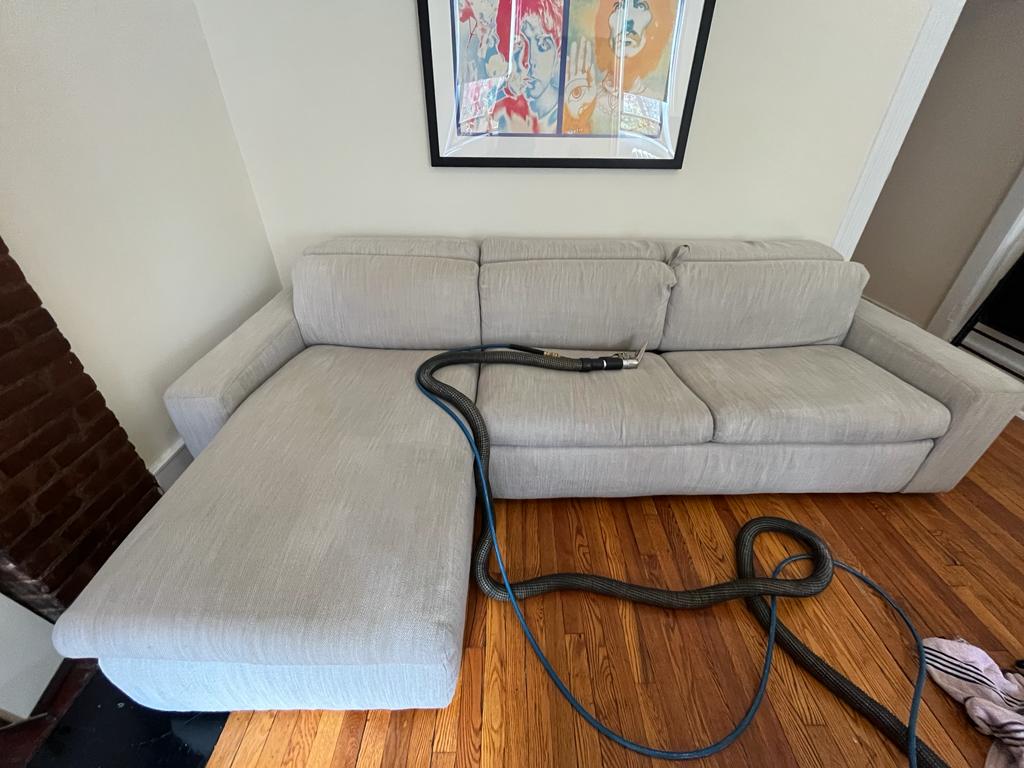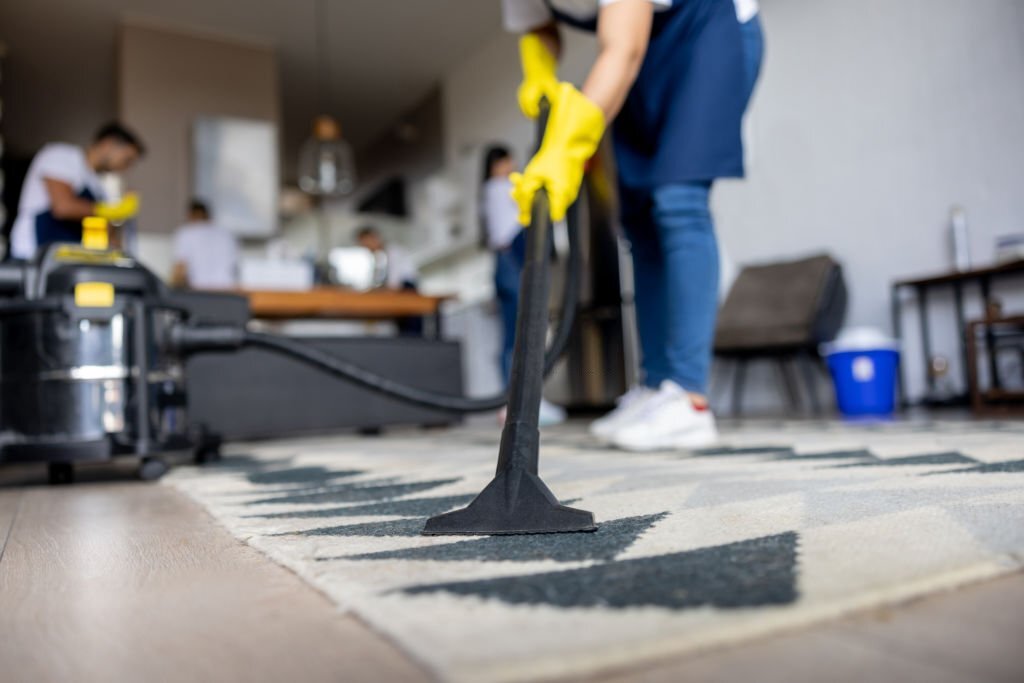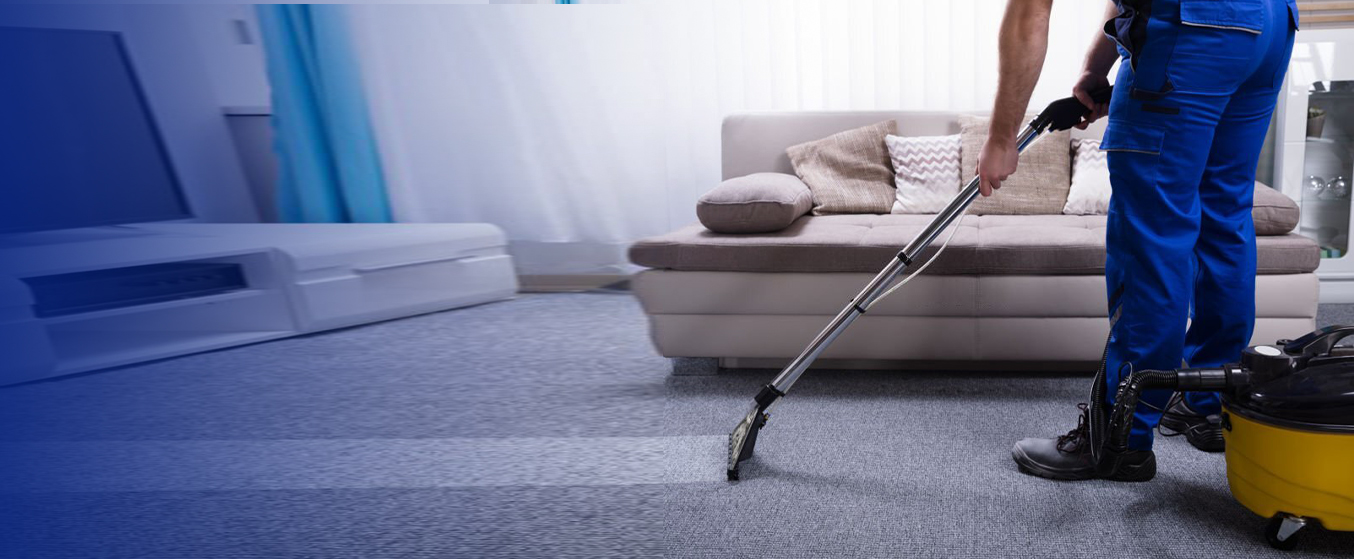
Tips for Removing Different Types of Stains from Upholstery
Maintaining a clean and stain-free upholstery can be a challenging task, especially when spills and accidents happen. Whether it’s a coffee stain on your favorite armchair or a food stain on the sofa, knowing how to effectively remove different types of stains is crucial. In this article, we will provide you with valuable tips and tricks to get rid of various stains from upholstery, ensuring that your furniture looks as good as new.
From red wine to ink stains, pet accidents to grease spills, we will cover it all. Our expert advice will guide you through the step-by-step process of tackling each type of stain, using common household items and cleaning techniques. With our practical tips, you can say goodbye to unsightly stains and hello to fresh and pristine upholstery.
So, whether you’re a homeowner, renter, or simply someone looking to keep their furniture in top condition, this article is for you. Get ready to learn the best methods for removing stubborn stains and restoring the beauty of your upholstery. Don’t let stains ruin your furniture any longer – let’s get started!
Common Types of Stains and Their Causes
Stains can occur from a wide range of sources, and understanding their causes can help you tackle them more effectively. Here are some of the most common types of stains you may encounter on your upholstery:
- Food and Beverage Stains: These stains can range from coffee and tea to ketchup and chocolate. They are often caused by accidental spills during meals or snacks.
- Pet Stains: If you have pets, you’re likely familiar with the occasional accidents they may have on your upholstery. Urine, vomit, and feces stains are common pet-related stains.
- Ink and Marker Stains: These stains can occur when pens, markers, or ink cartridges leak or get accidentally applied to your upholstery.
- Grease and Oil Stains: Whether it’s from cooking or accidental spills, grease and oil stains can leave a mark on your upholstery that requires special attention.
- Blood and Bodily Fluid Stains: Accidents happen, and sometimes blood or other bodily fluids can end up on your upholstery. These stains require immediate action to prevent permanent damage.
Now that we have a better understanding of the different types of stains, let’s move on to preparing for stain removal.
Preparing for Stain Removal
Before you start removing stains from your upholstery, it’s essential to gather the necessary supplies and prepare the area. Here are some tips to help you get ready:
- Identify the Fabric: Check the manufacturer’s label or any accompanying documentation to determine the type of fabric used on your upholstery. Different fabrics require different cleaning methods, so it’s crucial to know what you’re working with.
- Test in an Inconspicuous Area: Before applying any cleaning solution to the stained area, test it in an inconspicuous spot to ensure it doesn’t cause any discoloration or damage to the fabric.
- Blot, Don’t Rub: When dealing with fresh stains, always start by gently blotting the area with a clean cloth or paper towel. Rubbing the stain can spread it further and make it more challenging to remove.
- Remove Excess Debris: If there are any solid or semi-solid materials on the stain, carefully remove them using a spoon or a blunt knife. Be gentle to avoid pushing the stain deeper into the fabric.
Now that you’re prepared, let’s dive into the general stain removal tips that will help you tackle most stains effectively.
General Stain Removal Tips
No matter what type of stain you’re dealing with, these general tips will come in handy:
- Act Quickly: The sooner you address a stain, the easier it will be to remove. Try to tackle the stain as soon as you notice it to prevent it from setting into the fabric.
- Blot, Don’t Rub: As mentioned earlier, always blot the stain instead of rubbing it. Blotting helps absorb the stain, while rubbing can spread it and damage the fabric.
- Work from the Outside In: When treating a stain, start by working on the outer edges and gradually move towards the center. This method helps prevent the stain from spreading.
- Avoid Harsh Chemicals: Before using any cleaning solution, check if it’s safe to use on your upholstery fabric. Harsh chemicals can damage or discolor certain fabrics, so opt for milder alternatives whenever possible.
Now that you’re familiar with the general stain removal tips, let’s move on to specific methods for removing different types of stains from your upholstery.
Removing Food and Beverage Stains
Food and beverage stains can be quite common, especially if you enjoy eating or drinking on your upholstered furniture. Here are some methods to remove these stains:
- Blot the Stain: Start by blotting the stain with a clean cloth or paper towel to remove any excess liquid. Be gentle to avoid pushing the stain deeper into the fabric.
- Create a Cleaning Solution: Mix a small amount of dishwashing liquid with warm water to create a cleaning solution. Test it on an inconspicuous area before using it on the stain.
- Apply the Solution: Dip a clean cloth in the cleaning solution and gently dab it onto the stain. Avoid saturating the fabric, as excessive moisture can lead to mold or mildew growth.
- Blot and Rinse: After applying the solution, blot the stain again to absorb as much of it as possible. Then, rinse the area with a clean cloth dampened with water to remove any residue.
If the stain persists, repeat the process or consider using a specialized upholstery cleaner. Now, let’s move on to removing pet stains from your upholstery.
Removing Pet Stains
Pet accidents happen, but that doesn’t mean you have to live with the stains and odors they leave behind. Here’s how you can effectively remove pet stains from your upholstery:
- Blot the Stain: Start by blotting the stain with a clean cloth or paper towel to remove any excess liquid. Be thorough but gentle to avoid spreading the stain further.
- Create a Cleaning Solution: Mix equal parts of white vinegar and water in a spray bottle. Vinegar helps neutralize odors and break down stains. Test it on an inconspicuous area before using it on the stain.
- Spray and Blot: Spray the cleaning solution onto the stain, making sure to saturate it. Let it sit for a few minutes to allow the vinegar to work its magic. Then, blot the stain with a clean cloth or paper towel.
- Rinse and Dry: Rinse the area with clean water to remove any residue. Blot the area again to absorb excess moisture, and then let it air dry completely.
If the stain or odor persists, you may need to use a specialized pet stain and odor remover. Now, let’s move on to ink and marker stains.
Removing Ink and Marker Stains
Ink and marker stains can be stubborn, but with the right approach, you can remove them from your upholstery. Here’s what you need to do:
- Blot the Stain: Start by blotting the stain with a clean cloth or paper towel to remove any excess ink. Be careful not to spread the stain further.
- Apply Alcohol or Hairspray: Dab a small amount of rubbing alcohol or hairspray onto a clean cloth. Gently dab the cloth onto the stain, working from the outside in.
- Blot and Repeat: Blot the stain with a clean cloth to lift the ink. If necessary, repeat the process using a fresh cloth and more alcohol or hairspray.
- Clean the Area: After removing the stain, clean the area with a mild detergent and water. Rinse with a clean cloth dampened with water to remove any residue.
Remember to test the alcohol or hairspray on an inconspicuous area before using it on the stain. Now, let’s move on to removing grease and oil stains.
Removing Grease and Oil Stains
Greasy and oily stains can be a bit tricky to remove from upholstery, but with the right approach, you can restore your furniture’s pristine condition. Here’s what you need to do:
- Absorb the Excess: Start by blotting the stain with a clean cloth or paper towel to remove any excess grease or oil. Avoid rubbing the stain, as it can spread it further.
- Apply a Cleaning Solution: Mix a small amount of dishwashing liquid with warm water to create a cleaning solution. Test it on an inconspicuous area before using it on the stain.
- Dab the Stain: Dip a clean cloth into the cleaning solution and gently dab it onto the stain. Avoid scrubbing, as it can push the grease or oil deeper into the fabric.
- Blot and Rinse: After applying the solution, blot the stain with a clean cloth to absorb as much of it as possible. Then, rinse the area with a clean cloth dampened with water to remove any residue.
If the stain persists, consider using a specialized upholstery cleaner or consult a professional. Now, let’s move on to removing blood and bodily fluid stains.
Removing Blood and Bodily Fluid Stains
Accidents happen, and sometimes blood or other bodily fluids can end up on your upholstery. Prompt action is essential to prevent the stain from setting in. Here’s what you need to do:
- Blot the Stain: Start by blotting the stain with a clean cloth or paper towel to remove any excess liquid. Be gentle to avoid spreading the stain further.
- Create a Cleaning Solution: Mix a small amount of hydrogen peroxide with cold water to create a cleaning solution. Test it on an inconspicuous area before using it on the stain.
- Apply the Solution: Dip a clean cloth into the cleaning solution and gently dab it onto the stain. Avoid rubbing, as it can push the stain deeper into the fabric.
- Blot and Rinse: After applying the solution, blot the stain with a clean cloth to absorb as much of it as possible. Then, rinse the area with a clean cloth dampened with water to remove any residue.
If the stain persists, consult a professional upholstery cleaner for further assistance. Now that you’re equipped with the knowledge to tackle various types of stains, let’s wrap up.
Conclusion and Additional Resources for Stain Removal
Removing stains from upholstery may seem like a daunting task, but with the right techniques and tools, it can be manageable. By acting quickly, using appropriate cleaning solutions, and following the proper steps, you can effectively remove different types of stains from your upholstery.
Remember to always test any cleaning solution on an inconspicuous area before using it on the stain. Additionally, consult the manufacturer’s guidelines for your specific upholstery fabric to ensure you’re using the correct methods and products.
If you’re still struggling to remove a stubborn stain or prefer professional assistance, don’t hesitate to reach out to a reputable upholstery cleaning service.
Now that you have a comprehensive guide to removing stains from upholstery, there’s no need to let unsightly stains ruin the beauty of your furniture. With a little effort and the right techniques, you can keep your upholstery looking as good as new for years to come.
For more in-depth information on stain removal and upholstery care, check out the following resources:
- The Ultimate Guide to Upholstery Stain Removal
- Tips for Maintaining Upholstery
- Choosing the Right Upholstery Cleaner
Now, armed with these tips and resources, you can confidently tackle any stain that comes your way. Say goodbye to unsightly stains and hello to fresh and pristine upholstery!


